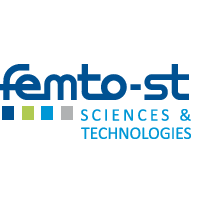Up-scaling of growth of LiNbO3/LiTaO3 thin films on industrial substrates by deposition techniques compatible with standard microfabrication techniques could open new possibilities of further miniaturization and the integration of next-generation MEMS, acoustic rf filters, ferroelectronic, and nanophotonic devices (ex. for 5G applications). The fabrication of high-quality alkaline niobate films at industrial scale is hindered by the difficulty to control the loss of volatile alkali metal oxides and consequently, the composition and physical properties of the films and irreproducibility of metalorganic precursors. LINKS project wishes to offer a robust LiNbO3/LiTaO3 film growth solution by DLI-CVD for scientific community and industry. Particular attention will be given to the development of the film/precursor processing in line with industrial standards in terms of uniformity, reproducticility and the production costs. To attain our ambitious objectives LINKS project will apply a multidisciplinary approach, including precursor chemistry, material elaboration, fabrication & processing, microfabrication, characterization of structural and physical properties including basic acoustic devices and waveguides.
The overview of our developments:
1. Molecular engineering and mechanistic studies of advanced MO precursors and their solutions (WP1). The replacement of standard MO precursors (ex. thd) by advanced homometallic compounds and heterometallic compounds of stoichiometry 1:1 will be considered..
2. Tuning of DLI-CVD system (WP2): (i) optimization of advanced precursor evaporation, thermal gradients & flow dynamics to ensure thickness (< 1%) /composition (<0.2 mol%) homogeneity over 100-150 mm diameter, particulate-free growth, & fast cooling option, (ii) possibility to change layer composition gradually during growth.
3. Synthesis of LN-LT derived materials with controlled and reproducible Li2O concentration (WP) by industrial scale DLI-CVD reactors. This includes an amelioration of Li incorporation in the growing layer and a suppression of volatile Li2O out-diffusion from the grown layer.
4. Electrical poling and characterization of physical properties, SAW/BAW devices and waveguides (WP4). The objective is to attain extreme control of film physical properties and to attain growth of ferroelectric films in single domain state and to demonstrate homogeneity of functional properties/performance on the 4” wafer scale and their reproducibility indifferent growth batches.
The consortium of LINKS project joins highly complementary national/ European leaders, FEMTO-ST, C2P2 and SME Annealsys in the topic bringing all necessary expertise and knowledge for the realisation of our common objective - developing the LN-LT films technology viable for real industrial applications. LINKS applies a science-supported total integrated material engineering approach of advanced synthesis/ cutting-edge micro-fabrication, characterization, and material integration in next generation devices, which will lead towards the industrialization of alkaline niobate films. Close collaboration with industry helps to be aware of industrial pressures and requirements at the beginning of developments. It stimulates the use of newly developed materials and their processing techniques by the industry and will help industry to adapt global competitive pressures by integration of enabling engineering technologies for future advanced materials.LINKS also seeks to intensify the relationship between academic and private sectors, which is essential to provide a strong European/French lead in this highly competitive industry.

